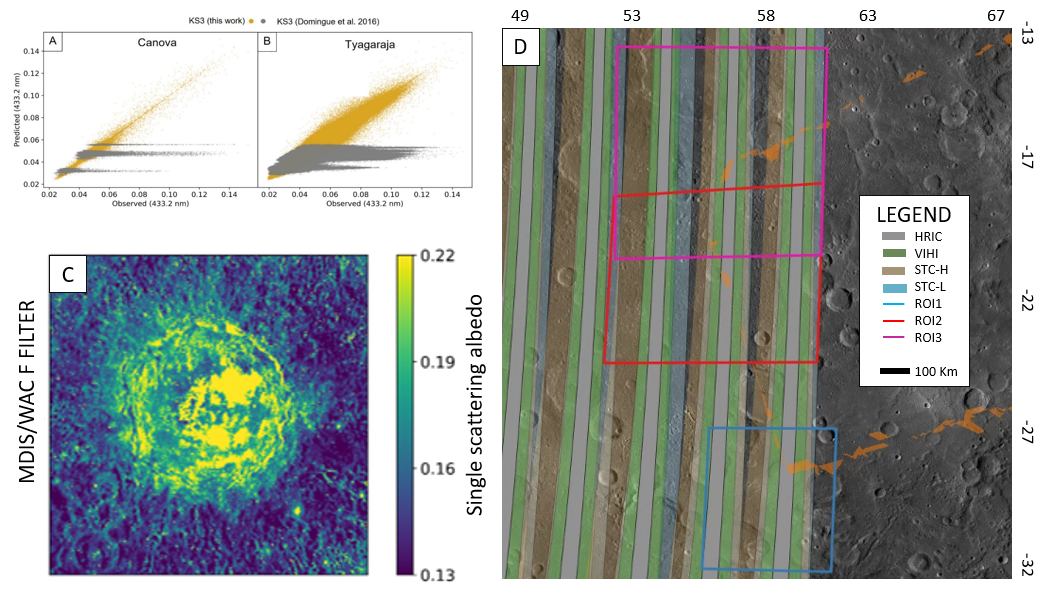Photometric modelling of MESSENGER/MDIS observations: science results and implications for the calibration of SIMBIO-SYS on BepiColombo
- 1INAF-Osservatorio Astronomico di Padova, Padova, Italy (giovanni.munaretto@inaf.it)
- 2Department of Geological Sciences, University of Padova, Padova, Italy
Introduction: The physical properties of a particulate surface, like roughness, grain size, shape and transparency affect how it reflects the incoming light. This concept is used in planetary photometry to infer the surface properties of a celestial object from multiple observations taken from different directions and solar illumination (Hapke et al. 2012). Models linking the observed surface brightness with parameters related to physical properties of the surface have been established. The estimation of such parameters is referred as photometric modelling (Domingue et al., 2016). On Mercury, this technique has been employed to construct monochrome and color global mosaics, but it was never applied to investigate local surface features (Domingue et al., 2016). Therefore, the photometric modelling of Mercury’s surface features represents a novel and useful tool to investigate their nature. In addition, the identification of high-performance photometric models of any given surface material over multiple wavelengths enables to accurately predict the amount of reflected sunlight that will be observed through remote cameras and spectrometers.
In this abstract, we first describe our modelling approach, discuss its improvement with respect to current available photometric models of Mercury, and present a few science cases in which it has been applied. Then, we will also show how this methodology is being applied for the calibration of SIMBIO-SYS observations that will be acquired during the Mercury Orbit Insertion (MOI) phase of the mission.
Methodology: we first analyze the Tyagaraja and Canova craters hollows (i.e., tens meters to several km-sized shallow, irregular, flat‐floored depressions characterized by bright interiors and haloes, Blewett et al., 2011), which are covered by multiple overlapping 8 filter MDIS/WAC (Hawkins et al., 2007) images with resolution higher than 665 m/px and phase angles from 30° to > 100°. Over this region, we construct a latitude-longitude sampling grid with 665 m spacing. For each point we retrieve the surface reflectance and the solar illumination and observation angles using the 3D information of the global USGS DTM and the spacecraft and Sun position information within the observation SPICE kernels. This dataset is fitted with the Hapke and Kaasalainen-Shkuratov photometric models and estimates of their parameter are obtained for each point of the grid (see for example Fig 1C).
Results
Modelling performance: Our results suggest that photometric models derived from the inversion of multiple, overlapping observations are more accurate, especially for bright targets, rather than global photometric models of Mercury (Fig 1A,B). Overall, we estimate a modelling accuracy of better than 10% at 3σ, comparable with the radiometric noise level of the observations.
Hollows results: Our results suggest that hollows are more backscattering than the floor of the crater in which they form. This is consistent with hollows being made of a material rich in holes and/or vescicles, in agreement with a formation by devolatilization. In addition, we find that they are smoother than the crater floor, consistently with the emplacement of a fine particles halo during hollow growth.

Figure 1. Modeled vs Observed reflectance obtained with our KS3 model (gold) and the global one for Mercury for Canova (A) and Tyagaraja (B) craters. C) Example of Hapke single scattering albedo map of Tyagaraja crater. D) MOI SIMBIO-SYS footprints and the Regions of Interests (ROI) that are being analyzed for the cross-calibration of the three channels.
Cross calibration of the SIMBIO-SYS channels: SIMBIO-SYS is a suite of three instruments, a high-resolution imager (HRIC), a stereocamera (STC) and a spectrometer (VIHI). Because of the dual-spacecraft configuration of BepiColombo, standard star observations with SIMBIO-SYS are not feasible until the satellite will be in its nominal orbit around Mercury. It is therefore pivotal to identify regions on the surface of Mercury with well-defined spectrophotometric properties that can be used as ground truth for the initial cross calibration of the three channels, prior to standard stars observations. Such regions will be also used to verify the integration times before the planning of the Global Mapping phase and to characterize the instrument straylight and pixel response non uniformity. The ROI will be observed during the Mercury Orbit Insertion (MOI) orbits where no standard stars pointing are still allowed. Therefore, we applied our methodology to identify ROIs within these orbits that currently have at least 5 MDIS/WAC observations, phase angles > 110° and resolutions higher than 665 m/px (Fig 1D). The retrieved photometric models for these regions will be used to determine accurate spectra (at the MDIS/WAC wavelengths) that will be interpolated within the SIMBIO-SYS photometric system and used to cross-calibrate the three channels of the instrument.
Discussion
Our analysis shows that overlapping multiangular MDIS/WAC observations can be used to invert local photometric models of the surface. This approach allowed us to initially study and characterize the scattering properties of hollows, finding that they are smoother and more back-scattering than the crater floors. This is consistent with hollows being formed by a volatile-release mechanism and emplacement of a halo of fine particles. We also found that this modelling approach is more accurate, in particular for high reflectance, than current global photometric models of Mercury. This led us to apply our methodology to selected locations that will be observed by SIMBIO-SYS during the MOI phase, and that will be used for absolute calibration of its three channels. More details will be presented at the conference.
Acknowledgments and Data
We gratefully acknowledge funding from the Italian Space Agency (ASI) under ASI-INAF agreement 2017- 47-H.0.
How to cite: Munaretto, G., Cremonese, G., Simioni, E., Lucchetti, A., Pajola, M., and Massironi, M.: Photometric modelling of MESSENGER/MDIS observations: science results and implications for the calibration of SIMBIO-SYS on BepiColombo, Europlanet Science Congress 2022, Granada, Spain, 18–23 Sep 2022, EPSC2022-353, https://doi.org/10.5194/epsc2022-353, 2022.

